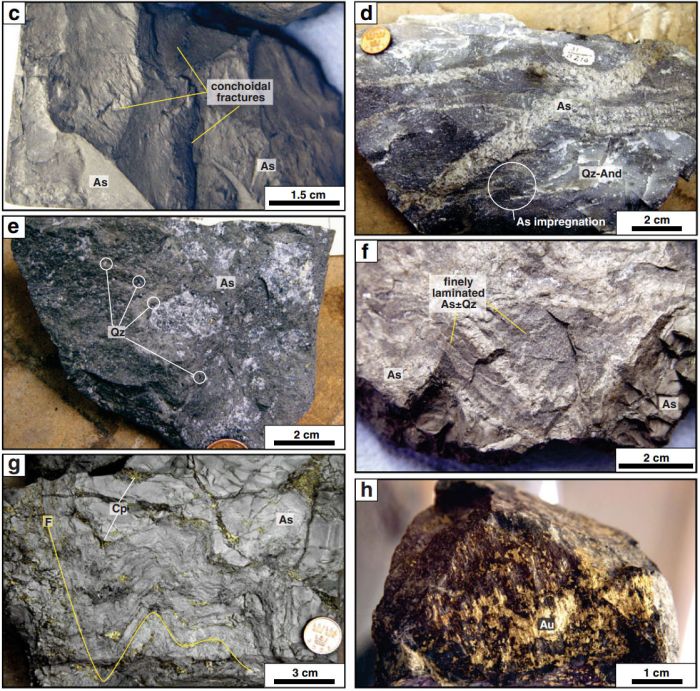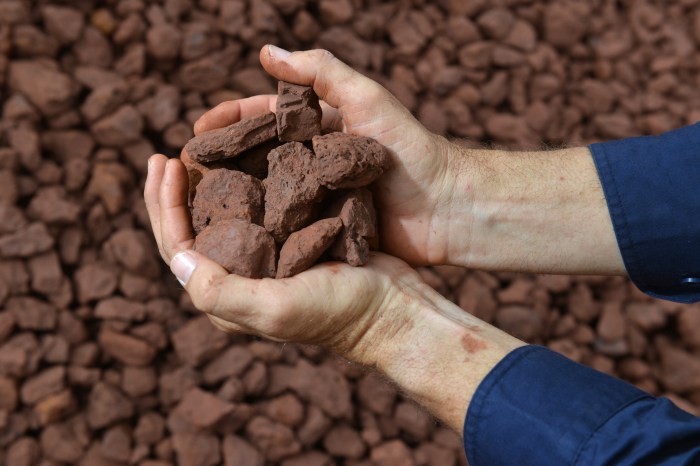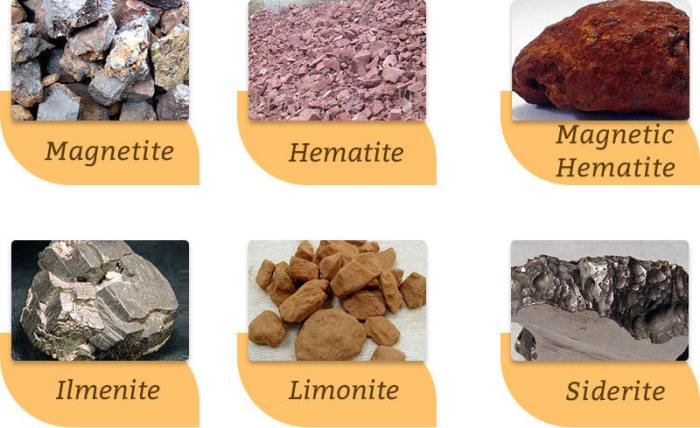Main ore of lead crossword – Galena: The Lead Ore in Crosswords takes us on a captivating journey into the world of lead mining, extraction, and its diverse applications. From its unique chemical composition to its historical significance, this article delves into the fascinating story of galena, the primary ore of lead.
Galena’s crystalline structure and physical properties play a crucial role in its mining and extraction processes, which have significant environmental implications. Moreover, lead’s versatility extends from batteries to historical artifacts, highlighting its enduring importance.
Galena: Main Ore Of Lead Crossword

Galena is the primary ore of lead. It is a lead sulfide mineral with the chemical formula PbS. Galena has a cubic crystal structure and is typically found in massive or granular form. It is a soft mineral with a Mohs hardness of 2.5 and a specific gravity of 7.5. Galena is a metallic mineral with a lead-gray color and a brilliant metallic luster.
Chemical Composition
Galena is composed of lead and sulfur atoms in a 1:1 ratio. The lead atoms are arranged in a face-centered cubic lattice, and the sulfur atoms are arranged in a body-centered cubic lattice. This arrangement gives galena its cubic crystal structure.
Crystal Structure
Galena has a cubic crystal structure. The unit cell of galena is a cube with a side length of 5.94 Å. The lead atoms are located at the corners and face centers of the unit cell, and the sulfur atoms are located at the body center and edge centers of the unit cell.
Physical Properties
Galena is a soft mineral with a Mohs hardness of 2.5. It is also a brittle mineral and can be easily broken. Galena has a specific gravity of 7.5, which is relatively high for a mineral. Galena is a metallic mineral with a lead-gray color and a brilliant metallic luster.
The primary ore of lead is galena, which is also known as lead glance. This dark gray mineral has a metallic luster and a high density. For those interested in brushing up on their algebra skills, check out abeka algebra 2 quiz 28 . Returning to the topic of lead ore, galena is commonly found in hydrothermal veins and is often associated with other minerals such as sphalerite and pyrite.
Mining and Extraction

Galena mining has been practiced for centuries, and the methods used have evolved over time. Traditional methods involved digging shallow pits or trenches, while modern techniques employ sophisticated machinery and equipment.
Once galena is extracted from the earth, it undergoes various processes to extract the lead. These processes include crushing, grinding, and flotation to separate the lead ore from other minerals. The lead ore is then smelted to extract the pure lead.
Environmental Impact
Galena mining can have a significant environmental impact. The mining process can release toxic chemicals into the air and water, and the waste products from mining can contaminate soil and groundwater. Additionally, galena mining can disrupt ecosystems and displace wildlife.
Uses of Lead

Lead is a versatile metal with a wide range of applications. It is commonly used in batteries, construction, ammunition, and radiation shielding.
Batteries
Lead is the primary component of lead-acid batteries, which are commonly used in cars, boats, and other vehicles. These batteries store electrical energy through the electrochemical reaction of lead and lead dioxide. When the battery is discharged, lead is oxidized to lead sulfate, while lead dioxide is reduced to lead.
When the battery is charged, the reverse reactions occur, regenerating lead and lead dioxide.
Construction
Lead is used in roofing, flashing, and gutters due to its resistance to corrosion and weather conditions. It is also used as a soundproofing material in buildings and as a ballast in roofing systems.
Ammunition
Lead is used in the production of bullets and shot for firearms. It is a dense and malleable metal, making it suitable for these applications.
Radiation Shielding
Lead is an effective absorber of radiation, making it suitable for use in radiation shielding applications. It is used in X-ray machines, nuclear reactors, and other environments where radiation protection is necessary.
Historical Uses
Historically, lead was used in a variety of applications, including:
- Water pipes: Lead was commonly used for water pipes in ancient Rome and other civilizations.
- Paint: Lead was used as a pigment in paints until the mid-20th century.
- Ceramics: Lead was used in the production of ceramics and glazes.
- Solder: Lead was used as a component of solder.
Due to concerns about lead toxicity, many of these historical uses have been discontinued.
Toxicity and Health Effects

Lead is a toxic metal that can have harmful effects on the human body. Exposure to lead can occur through inhalation, ingestion, or skin contact.
Lead poisoning can cause a wide range of symptoms, including:
- Abdominal pain
- Constipation
- Headaches
- Fatigue
- Irritability
- Learning disabilities
- Behavioral problems
- Kidney damage
- Brain damage
Lead exposure can also increase the risk of heart disease, stroke, and cancer.
Measures to Reduce Lead Exposure
There are a number of measures that can be taken to reduce lead exposure, including:
- Using lead-free paint
- Replacing lead pipes and fixtures
- Washing hands frequently
- Eating a healthy diet
- Avoiding exposure to lead-contaminated soil or dust
Alternatives to Lead
As concerns about lead’s toxicity grow, researchers and industries have explored alternative materials to replace it. These alternatives offer varying advantages and disadvantages, impacting the potential for reducing lead use.
Metals, Main ore of lead crossword
- Copper and its alloys (brass and bronze):Copper is a good conductor of electricity and heat, making it suitable for electrical wiring, plumbing, and industrial applications. Brass and bronze are stronger and more corrosion-resistant than copper, but they are also more expensive.
- Aluminum:Aluminum is lightweight, strong, and corrosion-resistant, making it a viable option for various applications, including construction, transportation, and packaging. However, aluminum is more expensive than lead and requires special handling techniques due to its reactivity.
- Zinc:Zinc is a relatively inexpensive and corrosion-resistant metal that can be used as a coating for iron and steel to protect against rust. It is also used in batteries and alloys.
Polymers
- Polyvinyl chloride (PVC):PVC is a versatile plastic that is used in a wide range of applications, including pipes, flooring, and electrical insulation. It is lightweight, durable, and inexpensive, but it can release harmful chemicals when burned.
- Polyethylene (PE):PE is a lightweight and flexible plastic that is used in packaging, toys, and construction materials. It is resistant to chemicals and moisture, but it is not as strong as other polymers.
- Polypropylene (PP):PP is a strong and durable plastic that is used in automotive parts, appliances, and packaging. It is resistant to heat and chemicals, but it is more expensive than other polymers.
Other Materials
- Glass:Glass is a non-toxic and inert material that can be used in a variety of applications, including containers, windows, and laboratory equipment. It is durable and resistant to chemicals, but it is also heavy and fragile.
- Ceramics:Ceramics are inorganic, non-metallic materials that are made by heating clay or other minerals at high temperatures. They are strong, durable, and resistant to heat and chemicals, but they can be brittle.
Impact of Reducing Lead Use
Reducing lead use can have a significant positive impact on human health and the environment. Lead exposure has been linked to a range of health problems, including brain damage, developmental disorders, and cancer. By reducing lead use, we can help to protect people, especially children, from these harmful effects.
In addition, reducing lead use can help to protect the environment. Lead can accumulate in soil and water, where it can harm plants, animals, and humans. By reducing lead use, we can help to create a cleaner and healthier environment for future generations.
Common Queries
What is the chemical composition of galena?
Galena is composed of lead sulfide (PbS).
What is the crystal structure of galena?
Galena has a cubic crystal structure.
What are the physical properties of galena?
Galena is a heavy, metallic mineral with a bluish-gray color and a high luster.